Parkinson’s disease is a type of disease that seriously affects people’s quality of life, also known as shaky paralysis, which occurs with the loss of healthy cells in the brain.
- What Is Parkinson’s Disease?
- What Are The Causes of Parkinson’s Disease?
- What Are The Risk Factors In Parkinson’s Disease?
- What Are The Protective Factors In Parkinson’s Disease?
- When Does Parkinson’s Disease Occur?
- How Common Is Parkinson’s Disease?
- Who Is Affected by Parkinson’s Disease?
- What Are The Symptoms of Parkinson’s Disease?
- How Is Parkinson’s Disease Diagnosed?
- Parkinson’s Disease Complications
- Stages of Parkinson’s Disease
- How Is Parkinson’s Disease Treated?
- How Does Parkinson’s Disease Affect the Body?
- Medicines for Parkinson’s Disease
- Deep Brain Stimulation for Parkinson’s Disease
- Parkinson’s Disease Therapies
- Living with Parkinson’s Disease
- How Is Parkinson’s Disease Prevention?
- How To Make Life Easier For Parkinson’s Patients?
- Surgical Treatment of Parkinson’s Disease
- The Importance Of Exercise In Parkinson’s Disease
- Parkinson’s Treatment Prices In Turkey
It usually occurs between the ages of 40-70. This disease, which was recorded in the literature in 1817, was named after James Parkinson, who discovered it.
What Is Parkinson’s Disease?
Parkinson’s is a nervous system disease that starts with a small amount of dopamine production, which is secreted in the human brain and plays an important role in mobility.
This disease occurs gradually and tends to progress rather slowly. For this reason, although it first manifests itself in one hand and with mild symptoms, in time, the inability of ability and the difficulty of control spreads to the whole body.
Although there is no clear cure for this disease, the quality of life of the patient is improved by adding some drugs to the treatment. While different applications such as battery therapy are performed in patients with high tremors, it is of great importance that the doctor and the patient have clear communication.
This disease, of which genetic predisposition is also among the causes, progresses according to the person and the disease. For this reason, there may be changes in the treatment methods and drugs used.
What Are The Causes of Parkinson’s Disease?
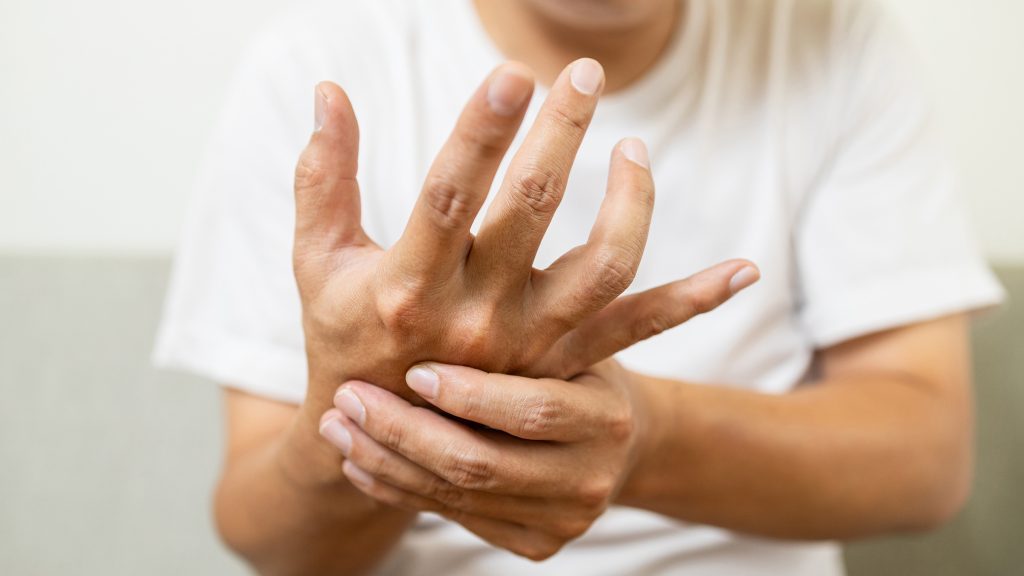
Discovered by James Parkinson in 1817, it is not yet known why Parkinson’s disease occurs. While research on it is still ongoing, it is thought that this disease is caused by environmental factors and genetic factors.
With the damage to the cells that secrete dopamine in the brain, the level of dopamine, which controls the movements and the continuity of these movements, also decreases. After this decrease, movements cannot be controlled and tremors begin to occur. And now the person has Parkinson’s disease.
What Are The Risk Factors In Parkinson’s Disease?
It is thought that environmental and genetic factors are involved in the formation of Parkinson’s disease. The risk factors for Parkinson’s Disease are listed below for you:
- Advancing age
- Having a history of Parkinson’s disease in one of the family members
- Rural life
- The use of well water
- Exposure to pesticides
- Being male
- Traumas resulting from blows to the head
- The use of high iron and manganese
- Consumption of animal fats
- The person is obese
- High stress
What Are The Protective Factors In Parkinson’s Disease?
There are some factors that protect from this disease. We have listed them below, but their use is dangerous unless it is under the control of a doctor.
One of them is smoking and alcohol, although it is not recommended. These are known to preserve dopamine cells, but no doctor does or recommends these methods. Other factors are:
- Coffee consumption
- Caffeine consumption
- Use of nonsteroidal anti-inflammatory drugs
- The use of antihypertensive drugs
- Intense physical activity
When Does Parkinson’s Disease Occur?
This disease, which is more common in men than women, usually occurs between the ages of 40-70. It manifests itself, especially after the age of 65. Among humans, one out of every 100 people after the age of 65 has this disease.
Although older ages pose a risk of catching this disease, there are also people who have Parkinson’s disease at an early age. The cause of the disease in these people is genetic factors.
How Common Is Parkinson’s Disease?
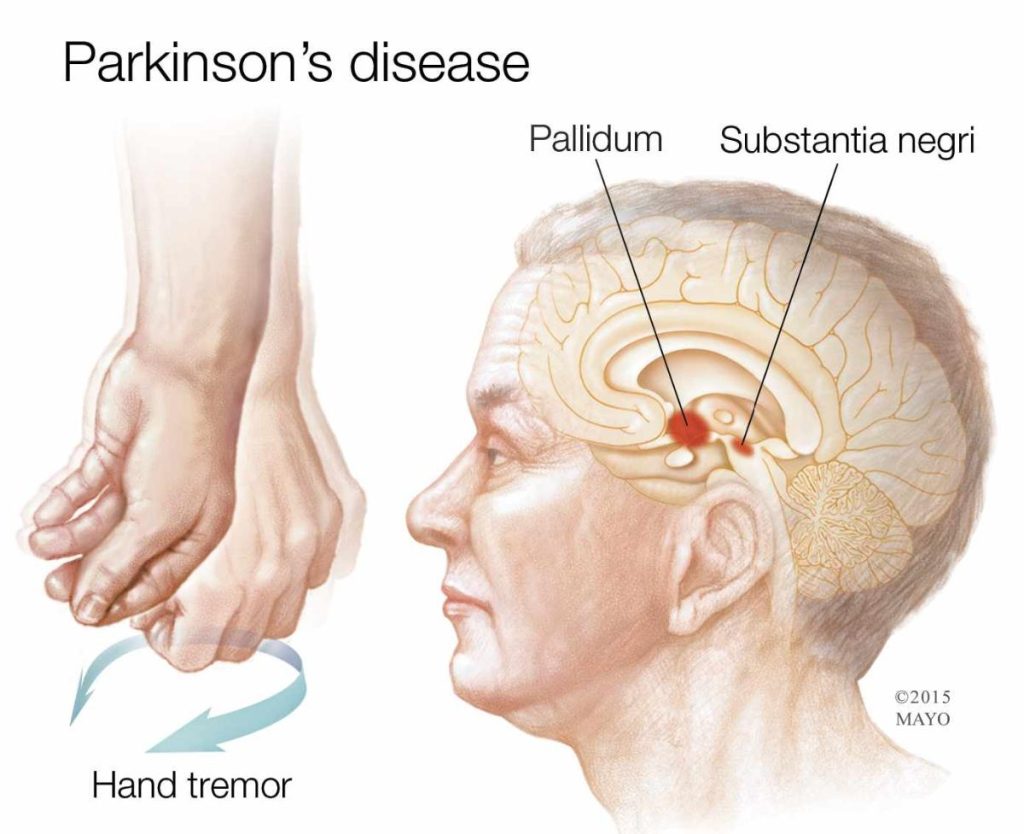
Parkinson’s disease is a relatively common condition. It is estimated that about 1% of people over the age of 60 have this disease. The number of people with Parkinson’s disease is expected to increase as the population ages.
The symptoms of Parkinson’s disease can vary from person to person. The most common symptoms include:
- Tremor: A shaking in the hands, arms, legs, or face.
- Rigidity: Stiffness of the muscles.
- Bradykinesia: Slowness of movement.
- Postural instability: Difficulty with balance and coordination.
- Impaired fine motor skills: Difficulty with tasks that require fine motor control, such as writing or buttoning a shirt.
- Speech problems: Slow, slurred speech.
- Depression: A common symptom of Parkinson’s disease.
Who Is Affected by Parkinson’s Disease?
Parkinson’s disease is a progressive neurological disorder that affects movement. It is caused by the loss of dopamine-producing cells in the brain. Dopamine is a neurotransmitter that helps control movement.
Parkinson’s disease can affect anyone, but it is more common in older adults. The average age of onset is 60 years old. However, it can also occur in younger people, even as young as 20 years old.
Men are more likely to develop Parkinson’s disease than women. The exact reason for this is not known.
There are a number of risk factors for Parkinson’s disease, including:
- Age: Parkinson’s disease is more common in older adults.
- Family History: People who have a family history of Parkinson’s disease are more likely to develop the condition.
- Certain Genes: Certain genes have been linked to Parkinson’s disease.
- Exposure To Certain Toxins: Exposure to certain toxins, such as pesticides, has been linked to Parkinson’s disease.
There is no sure way to prevent Parkinson’s disease, but there are some things that people can do to reduce their risk, such as:
- Maintaining a Healthy Weight: Obesity is a risk factor for Parkinson’s disease.
- Exercising Regularly: Exercise can help to reduce the risk of Parkinson’s disease.
- Eating a Healthy Diet: A healthy diet can help to reduce the risk of Parkinson’s disease.
- Avoiding Smoking: Smoking is a risk factor for Parkinson’s disease.
- Limiting Alcohol Consumption: Excessive alcohol consumption is a risk factor for Parkinson’s disease.
- Managing Stress: Stress can worsen the symptoms of Parkinson’s disease.
What Are The Symptoms of Parkinson’s Disease?
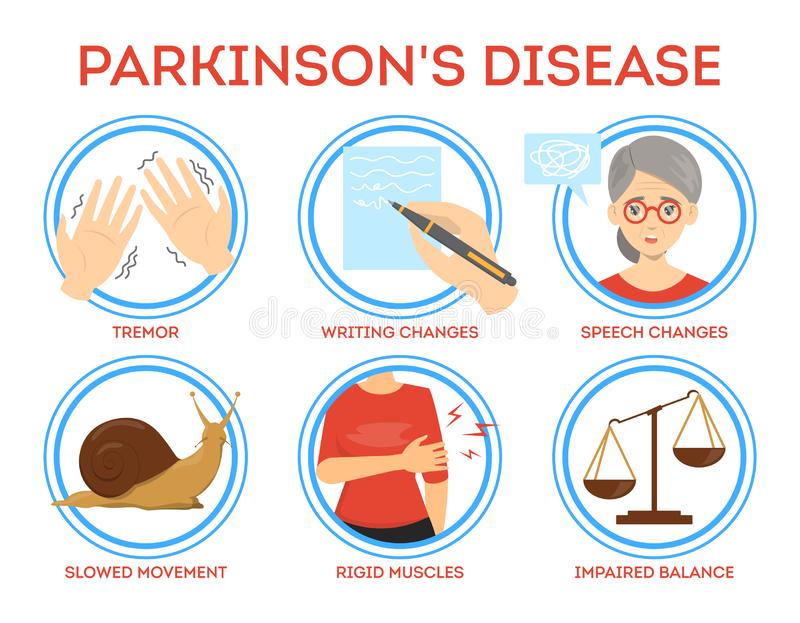
- Decrease in facial expressions
- Defects in the movement system
- Speech disruption
- Posture disorders that occur in the person
- Slowing the person’s movements and trembling
- Intense pain in the arms and difficulty moving
- The most common symptom is tremors in one hand or fingers when the person is resting, and no swaying back and forth while walking in the trembling hand
Parkinson’s disease is a slowly progressive disease. Different symptoms occur in these stages. These stages and their symptoms can be listed as follows:
- First Phase; Symptoms occur on one side and mildly. While many deteriorations are noticed by the patients and their relatives, mild tremors occur.
- Second Phase; In this stage, while posture and gait are severely affected, the person has a mild disability. Tremors occur on both sides of the body.
- Third Phase; In this stage, the person’s balance is disturbed and falls occur. Movements slow.
- Fourth Phase; In this phase, the exacerbated symptoms affect the patient seriously and the patient becomes unable to live alone. There is stiffness and slowness in movements and behaviors.
- Fifth Phase; In this last stage, the patient has to use a wheelchair and is in need of care.
How Is Parkinson’s Disease Diagnosed?
- Parkinson’s disease is a progressive neurological disorder that affects movement. It is caused by the loss of dopamine-producing cells in the brain. Dopamine is a neurotransmitter that helps control movement.
- There is no single test that can definitively diagnose Parkinson’s disease. The diagnosis is based on a careful history and physical examination, as well as specialized tests.
- The doctor will ask about your symptoms and medical history. They will also perform a physical examination, paying attention to your movement, balance, and coordination.
The doctor may also order specialized tests, such as:
DaTscan: This test uses a radioactive tracer to image the dopamine-producing cells in the brain. A decrease in these cells is a sign of Parkinson’s disease.
Single-photon emission computed tomography (SPECT): This test uses a radioactive tracer to image the blood flow to the brain. A decrease in blood flow to the brain is a sign of Parkinson’s disease.
Magnetic resonance imaging (MRI): This test uses a strong magnetic field and radio waves to create images of the brain. MRI can be used to rule out other conditions that can cause symptoms similar to Parkinson’s disease.
The diagnosis of Parkinson’s disease can be difficult, especially in the early stages of the disease. However, the earlier the diagnosis is made, the sooner treatment can be started, which can help to improve the quality of life for people with Parkinson’s disease.
If you are concerned that you or someone you know may have Parkinson’s disease, talk to your doctor. They can help you to determine if further testing is needed.
Here are some additional tips for getting a diagnosis of Parkinson’s disease:
- Be prepared to answer questions about your symptoms and medical history.
- Bring a family member or friend with you to your appointment to help you remember what is said.
- Ask your doctor about the benefits and risks of any tests that they recommend.
- Get a second opinion if you are not sure about the diagnosis.
Parkinson’s Disease Complications

Parkinson’s disease is a progressive neurological disorder that affects movement. It is caused by the loss of dopamine-producing cells in the brain. Dopamine is a neurotransmitter that helps control movement.
Parkinson’s disease can cause a variety of symptoms, including tremors, muscle rigidity, slowness of movement, and impaired balance and coordination. As the disease progresses, it can also cause a number of complications, including:
- Depression: Depression is a common complication of Parkinson’s disease. It is estimated that up to 40% of people with Parkinson’s disease experience depression.
- Anxiety: Anxiety is another common complication of Parkinson’s disease. It is estimated that up to 30% of people with Parkinson’s disease experience anxiety.
- Sleep Problems: Sleep problems are also common in people with Parkinson’s disease. These problems can include difficulty falling asleep, staying asleep, and restless legs syndrome.
- Cognitive Decline: Cognitive decline is a gradual decline in thinking, memory, and judgment. It is a common complication of Parkinson’s disease, especially in people with advanced disease.
- Pain: Pain is another common complication of Parkinson’s disease. It can be caused by a variety of factors, including muscle stiffness, joint pain, and nerve damage.
- Urinary Problems: Urinary problems are also common in people with Parkinson’s disease. These problems can include difficulty urinating, urinary incontinence, and urinary tract infections.
- Constipation: Constipation is also a common problem in people with Parkinson’s disease. It is caused by a variety of factors, including decreased mobility, dehydration, and medications.
- Falls: Falls are a serious complication of Parkinson’s disease. They are caused by a variety of factors, including muscle weakness, poor balance, and impaired coordination.
- Social Isolation: Social isolation is a common problem for people with Parkinson’s disease. It can be caused by the physical symptoms of the disease, as well as the emotional and psychological challenges of living with a chronic illness.
Stages of Parkinson’s Disease
Parkinson’s disease is a progressive neurological disorder that affects movement. It is caused by the loss of dopamine-producing cells in the brain. Dopamine is a neurotransmitter that helps control movement.
The stages of Parkinson’s disease are not always clear-cut, and the symptoms can vary from person to person. However, there are four main stages that are generally recognized:
- Stage 1: The symptoms are mild and may not be noticeable to others. The most common symptom is a tremor in one hand.
- Stage 2: The symptoms are more noticeable and can interfere with daily activities. The tremor may spread to the other hand, and other symptoms, such as stiffness and slowness of movement, may develop.
- Stage 3: The symptoms are severe and can make it difficult to walk, talk, and perform other activities. The tremor may become more pronounced, and other symptoms, such as balance problems and difficulty swallowing, may develop.
- Stage 4: The symptoms are very severe and can make it difficult to care for oneself. The person may need help with walking, talking, and eating.
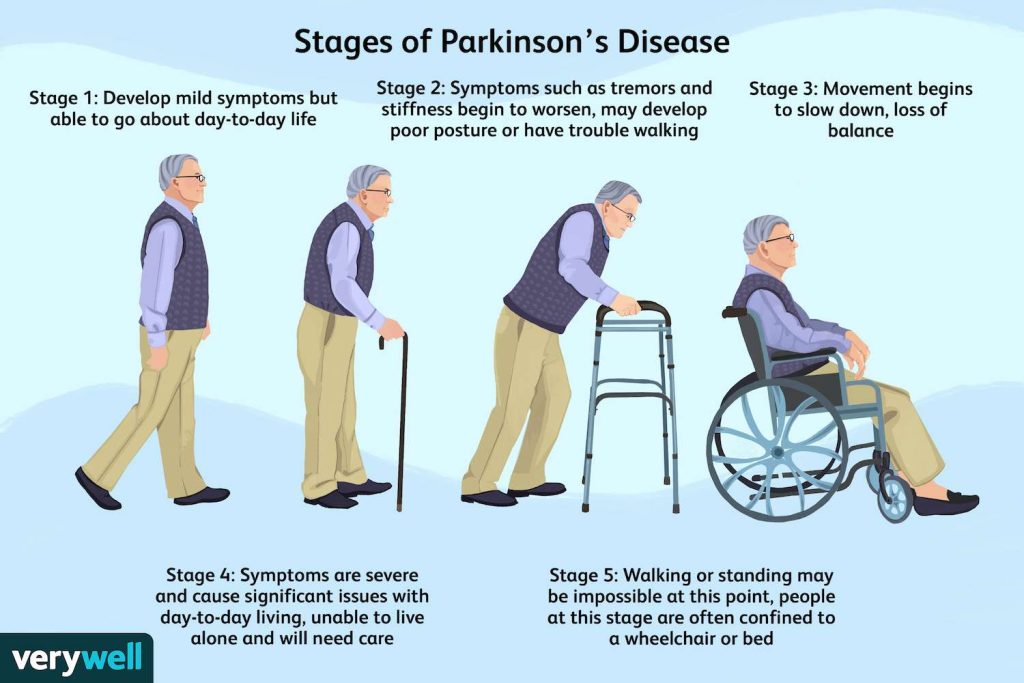
How Is Parkinson’s Disease Treated?
There is no clear treatment method that will completely eliminate Parkinson’s disease. Drug treatments for patients, on the other hand, slow down the course of the disease and increase the quality of life to the highest level. It is aimed that patients are strong enough to continue living on their own.
In the drug treatment applied to the patient with Parkinson’s Disease:
- The names of the drugs given and how to use them should be known by the patient and their relatives.
- Medicines should be taken in appropriate doses and at specified times.
- The patient should be followed closely and carefully by the doctor.
- The patient should be followed regularly and the dose and time of the drugs should be regulated.
- The effects and side effects of drugs should not be overlooked and precautions should be taken according to the situations that these side effects will create.
In some stages of progressive Parkinson’s disease, only oral medications may not be effective. In this case, the surgery should be deducted. However, in patients who are not suitable for surgery, the way the drugs are administered is changed. In this change, a needle is placed under the skin of the patient, and drug administration is made continuous by means of a pump.
In another form of drug administration, the drug is administered continuously through a tube extending from the hole in the abdomen to the intestine.
Another method that can be applied to this disease is surgical operation. However, it is not applied to every patient at every stage. Even if it is applied in situations suitable for the patient, the disease does not disappear completely and the patient continues to use the drug.
The exercise method that the doctor will add to the treatment, is aimed at the body continuing to live a healthier life.
How Does Parkinson’s Disease Affect the Body?
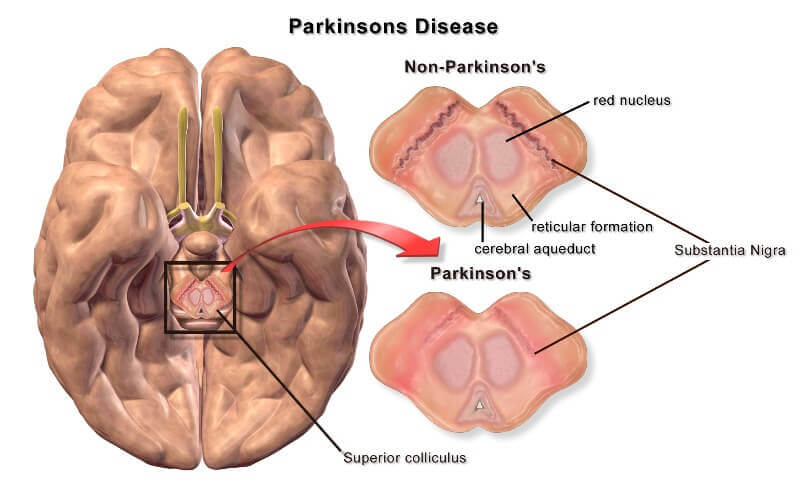
Parkinson’s disease is a progressive neurological disorder that affects movement. It is caused by the loss of dopamine-producing cells in the brain. Dopamine is a neurotransmitter that helps control movement.
The symptoms of Parkinson’s disease can vary from person to person, but the most common symptoms include:
- Tremor: A shaking in the hands, arms, legs, or face.
- Rigidity: Stiffness of the muscles.
- Bradykinesia: Slowness of movement.
- Postural Instability: Difficulty with balance and coordination.
- Impaired Fine Motor Skills: Difficulty with tasks that require fine motor control, such as writing or buttoning a shirt.
- Speech Problems: Slow, slurred speech.
- Depression: A common symptom of Parkinson’s disease.
In addition to these movement-related symptoms, Parkinson’s disease can also affect other parts of the body, including:
- Sleep: People with Parkinson’s disease may have difficulty falling asleep or staying asleep. They may also experience early morning awakenings.
- Mood: People with Parkinson’s disease may experience depression, anxiety, or apathy.
- Cognition: People with Parkinson’s disease may experience cognitive decline, such as difficulty thinking, remembering, and making decisions.
- Autonomic Nervous System: The autonomic nervous system controls involuntary functions, such as heart rate, blood pressure, and digestion. People with Parkinson’s disease may experience problems with these functions, such as constipation, urinary incontinence, and orthostatic hypotension (low blood pressure when standing up).
Medicines for Parkinson’s Disease
Parkinson’s disease is a progressive neurological disorder that affects movement. It is caused by the loss of dopamine-producing cells in the brain. Dopamine is a neurotransmitter that helps control movement.
There is no cure for Parkinson’s disease, but there are treatments that can help to manage the symptoms. Medicines are the most common treatment for Parkinson’s disease.
The main types of medicines for Parkinson’s disease are:
- Levodopa: Levodopa is the most effective medicine for Parkinson’s disease. It is a precursor to dopamine, which means that it is converted into dopamine in the brain.
- Dopamine Agonists: Dopamine agonists are drugs that mimic the effects of dopamine. They can be used alone or in combination with levodopa.
- MAO-B Inhibitors: MAO-B inhibitors slow down the breakdown of dopamine. They are often used in combination with levodopa.
- COMT Inhibitors: COMT inhibitors slow down the breakdown of levodopa. They are often used in combination with levodopa.
- Anticholinergics: Anticholinergics are used to treat tremors and rigidity. They can cause side effects, such as dry mouth, constipation, and blurred vision.
- The type of medicine that is right for you will depend on your individual symptoms and needs. Your doctor will work with you to find the best treatment plan.
In addition to medicines, there are other treatments for Parkinson’s disease, such as:
- Physical Therapy: Physical therapy can help to improve balance, coordination, and mobility.
- Speech Therapy: Speech therapy can help to improve speech and swallowing.
- Occupational Therapy: Occupational therapy can help to improve activities of daily living, such as dressing and eating.
- Surgery: Surgery is sometimes used to treat Parkinson’s disease, but it is not a cure.
The goal of treatment for Parkinson’s disease is to improve the quality of life for people with the condition. With the right treatment, people with Parkinson’s disease can live long and productive lives.
Deep Brain Stimulation for Parkinson’s Disease
Deep brain stimulation (DBS) is a surgical treatment for Parkinson’s disease. It involves implanting electrodes in specific areas of the brain that control movement. The electrodes are connected to a pacemaker-like device that sends electrical pulses to the brain.
DBS can help to improve the symptoms of Parkinson’s disease, such as tremors, rigidity, slowness of movement, and impaired balance and coordination. It can also help to improve quality of life by reducing pain and fatigue.
DBS is not a cure for Parkinson’s disease, but it can be a very effective treatment. It is usually used when other treatments, such as medicines, have not been able to control the symptoms.
The DBS procedure is performed under general anesthesia. The electrodes are implanted in the brain using a stereotactic frame, which is a metal frame that is attached to the skull. The electrodes are then connected to the pacemaker-like device, which is implanted under the skin in the chest.
DBS is a safe and effective treatment for Parkinson’s disease. However, it does have some risks, such as infection, bleeding, and damage to brain tissue.
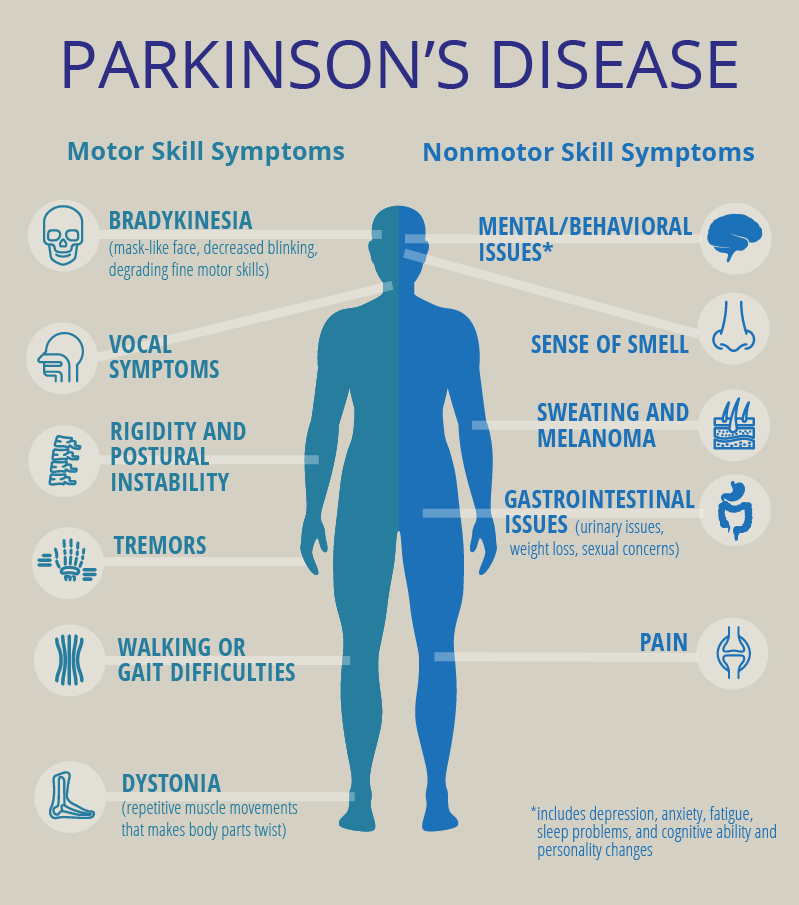
Parkinson’s Disease Therapies
Parkinson’s disease is a progressive neurological disorder that affects movement. It is caused by the loss of dopamine-producing cells in the brain. Dopamine is a neurotransmitter that helps control movement.
There is no cure for Parkinson’s disease, but there are treatments that can help to manage the symptoms. Therapies for Parkinson’s disease can be divided into two main categories:
- Medical Therapies: These include medicines, surgery, and deep brain stimulation.
- Non-medical Therapies: These include physical therapy, speech therapy, occupational therapy, and lifestyle changes.
The goal of treatment for Parkinson’s disease is to improve the quality of life for people with the condition. With the right treatment, people with Parkinson’s disease can live long and productive lives.
Medical therapies for Parkinson’s disease
The most common medical therapies for Parkinson’s disease are medicines. There are several different types of medicines that can be used to treat Parkinson’s disease, including:
- Levodopa: Levodopa is the most effective medicine for Parkinson’s disease. It is a precursor to dopamine, which means that it is converted into dopamine in the brain.
- Dopamine Agonists: Dopamine agonists are drugs that mimic the effects of dopamine. They can be used alone or in combination with levodopa.
- MAO-B Inhibitors: MAO-B inhibitors slow down the breakdown of dopamine. They are often used in combination with levodopa.
- COMT Inhibitors: COMT inhibitors slow down the breakdown of levodopa. They are often used in combination with levodopa.
- Anticholinergics: Anticholinergics are used to treat tremors and rigidity. They can cause side effects, such as dry mouth, constipation, and blurred vision.
Other medical therapies for Parkinson’s disease include:
- Surgery: Surgery is sometimes used to treat Parkinson’s disease, but it is not a cure. The most common type of surgery for Parkinson’s disease is deep brain stimulation (DBS). DBS involves implanting electrodes in specific areas of the brain that control movement. The electrodes are connected to a pacemaker-like device that sends electrical pulses to the brain.
- Gene Therapy: Gene therapy is a type of treatment that involves inserting genes into cells to treat a disease. Gene therapy is still in the early stages of development for Parkinson’s disease, but it is a promising area of research.
Non-medical therapies for Parkinson’s disease
Non-medical therapies can also be an important part of the treatment plan for Parkinson’s disease. These therapies can help to improve symptoms and quality of life.
Some of the most common non-medical therapies for Parkinson’s disease include:
- Physical Therapy: Physical therapy can help to improve balance, coordination, and mobility.
- Speech Therapy: Speech therapy can help to improve speech and swallowing.
- Occupational Therapy: Occupational therapy can help to improve activities of daily living, such as dressing and eating.
- Lifestyle Changes: Lifestyle changes, such as regular exercise and a healthy diet, can also help to manage the symptoms of Parkinson’s disease.
Living with Parkinson’s Disease

- Stay Active: Exercise can help to improve symptoms and quality of life.
- Eat a Healthy Diet: A healthy diet can help to reduce the risk of complications.
- Get Enough Sleep: Sleep deprivation can worsen symptoms.
- Manage Stress: Stress can worsen symptoms.
- Join a Support Group: Support groups can provide emotional support and practical information.
How Is Parkinson’s Disease Prevention?
Parkinson’s disease is a progressive neurological disorder that affects movement. It is caused by the loss of dopamine-producing cells in the brain. Dopamine is a neurotransmitter that helps control movement.
The exact cause of Parkinson’s disease is unknown, but there are a number of risk factors, including:
- Age: Parkinson’s disease is more common in people over the age of 60.
- Family History: People who have a family history of Parkinson’s disease are more likely to develop the condition.
- Certain Genes: Certain genes have been linked to Parkinson’s disease.
Exposure To Certain Toxins: Exposure to certain toxins, such as pesticides, has been linked to Parkinson’s disease.
There is no sure way to prevent Parkinson’s disease, but there are some things that people can do to reduce their risk, such as:
- Maintaining a Healthy Weight: Obesity is a risk factor for Parkinson’s disease.
- Exercising Regularly: Exercise can help to reduce the risk of Parkinson’s disease.
- Eating a Healthy Diet: A healthy diet can help to reduce the risk of Parkinson’s disease.
- Avoiding Smoking: Smoking is a risk factor for Parkinson’s disease.
- Limiting Alcohol Consumption: Excessive alcohol consumption is a risk factor for Parkinson’s disease.
- Managing Stress: Stress can worsen the symptoms of Parkinson’s disease.
If you are concerned about your risk of developing Parkinson’s disease, talk to your doctor. There are a number of things that your doctor can do to assess your risk and recommend ways to reduce it.
Here are some additional tips for preventing Parkinson’s disease:
Get Regular Checkups: Your doctor can screen you for Parkinson’s disease and other neurological disorders.
Stay Informed About The Latest Research: There is ongoing research into the causes and prevention of Parkinson’s disease. Stay informed about the latest research so that you can make informed decisions about your health.
Get Involved In Support Groups: There are a number of support groups available for people with Parkinson’s disease and their families. These groups can provide emotional support and practical information.
How To Make Life Easier For Parkinson’s Patients?
It should not be forgotten that the movements of people with this disease slow down over time and become uncontrollable. For this reason, it is necessary to avoid all factors that will restrict the patient’s speech and movements
- Practicing speaking with the patient
- Using tools such as cutlery that the patient can hold comfortably with trembling hands, and they are not in a structure to break
- Elimination of items such as carpets, rugs, and mats on the floor so that they do not endanger the patient by entangling
- Removing door sills in the house
- Preparing areas where the person can sit comfortably
- Attaching to the bathrooms and toilets in the house from the handles that the person can easily hold and move
- Small things like using a straw for comfortable consumption while drinking something are big steps to make the patient’s life easier
Surgical Treatment of Parkinson’s Disease
While the treatment of Parkinson’s disease is done with drugs in the early stages, in some stages some patients need to be treated with surgical intervention. This intervention is aimed that the limitations and symptoms caused by the disease will be mild, if not eliminated, by implanting a brain pacemaker.
In order for the patient to be operated on, a detailed examination is required by the doctor. In some cases, surgical intervention is performed on the patient, while in other cases, this surgical operation is either postponed or canceled.
The Importance Of Exercise In Parkinson’s Disease
Exercise is important when the person is healthy. But it becomes more important if the person has a disease. For this reason, it is recommended that every healthy or sick individual should exercise for a certain time daily.
In people with Parkinson’s disease, on the other hand, exercise affects many factors such as walking, balancing, being flexible, ability to grasp objects, and posture. For this reason, at least 2.5 hours of exercise per week slows the course of this disease, while increasing the patient’s quality of life.
Parkinson’s Treatment Prices In Turkey
Turkey has made significant progress in Parkinson’s disease, as in many other areas. Both hospitals and doctors are advancing the treatment process by aiming to increase the quality of life of these patients.
Providing service with fully equipped hospitals and friendly doctors and staff, Turkey welcomes patients with compassion. The most important criterion for foreign patients to choose Turkey is this humane behavior.
Hospitals, where affordable treatment opportunities are created, are preferred by foreign patients. If you also want to choose Turkey for the diagnosis and treatment of Parkinson’s disease, you can contact us for any questions you may have in mind and information on Parkinson’s Treatment Prices in Turkey.

Vimfay International Health Services